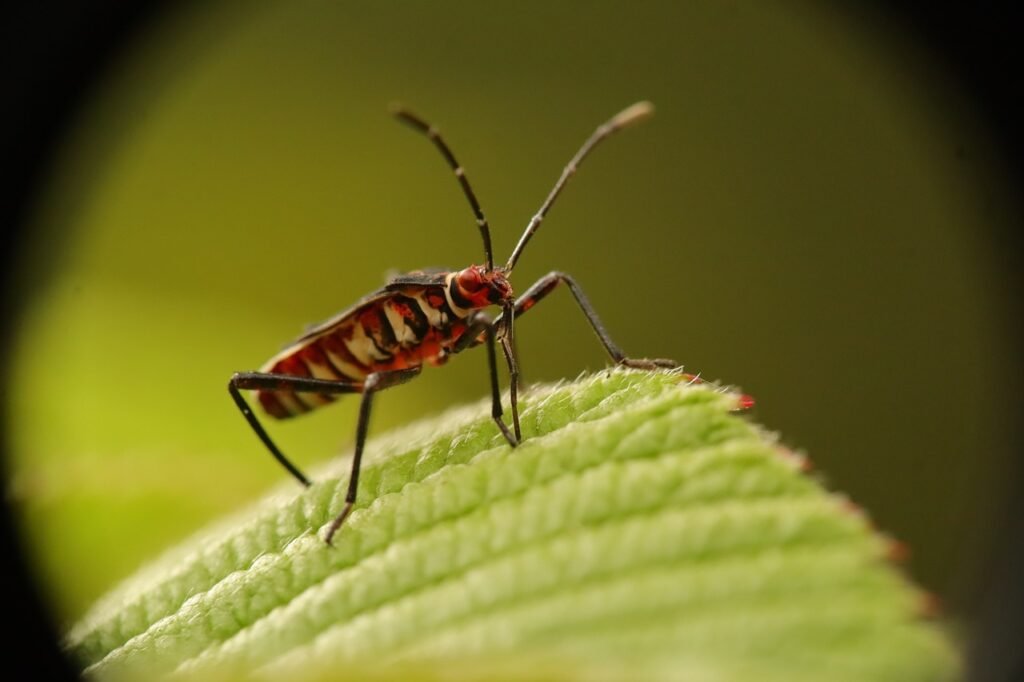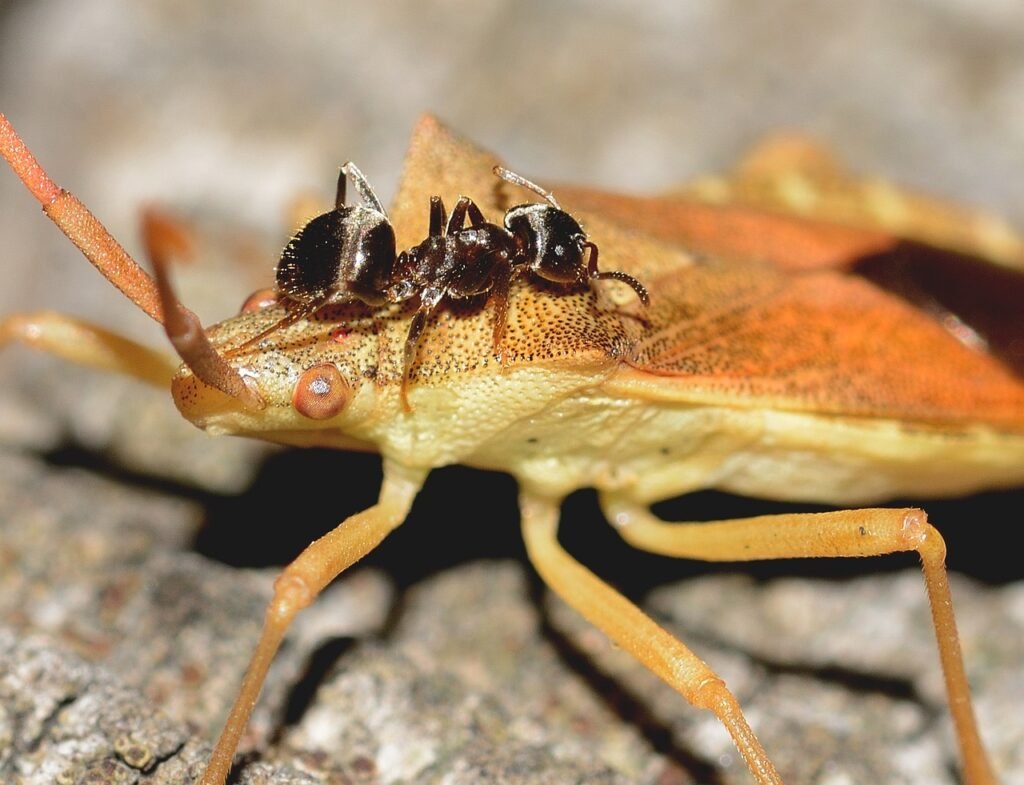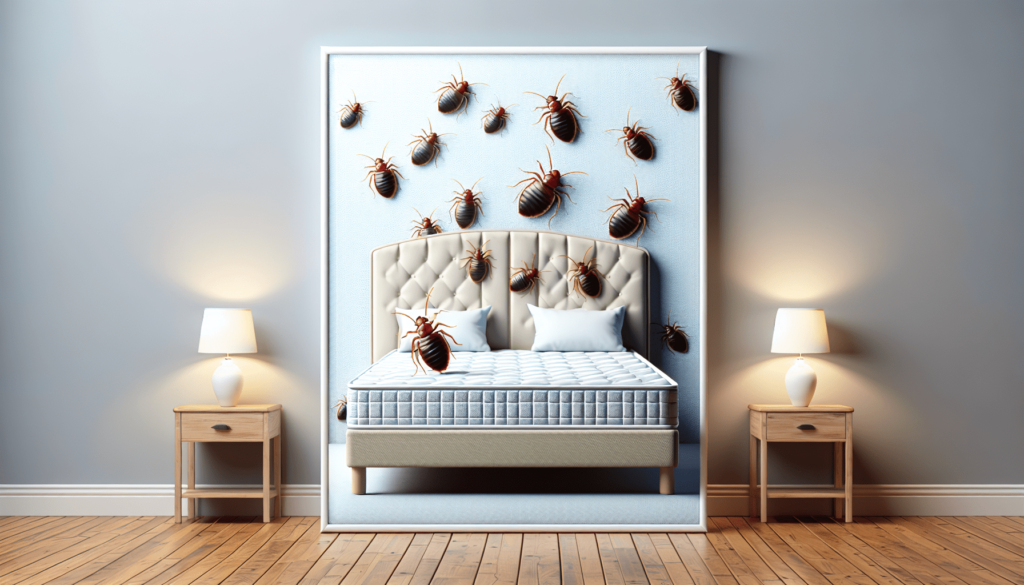If you’re wondering what bed bugs look like on a mattress, you’ve come to the right place. In this article, we’ll dive into the world of these pesky pests and provide you with all the information you need to identify them. From their appearance to their behavior, we’ll cover it all. So, if you’re tired of waking up with itchy bites or noticing strange stains on your mattress, keep reading to learn how to spot these unwelcome guests and take action to get rid of them for good.
Understanding Bed Bugs
Bed bugs are small, oval-shaped insects that feed on the blood of humans or animals. They are reddish-brown in color and measure about 5-7 millimeters in length. These nocturnal pests are known for their ability to hide in cracks and crevices during the day and emerge at night to feed on their hosts. They are infamous for infesting mattresses, where they can cause numerous problems for those unlucky enough to have an infestation.
Definition and Basic Description of Bed Bugs
Bed bugs are parasitic insects that belong to the family Cimicidae. They are commonly found in areas where humans sleep or rest, such as homes, hotels, and dormitories. These pests are wingless and rely on humans or animals to transport them from one location to another. They prefer to live in warm environments and feed on blood every 5-10 days, depending on the availability of a host.
Life Cycle of Bed Bugs
Bed bugs go through several stages of development during their life cycle. The entire life cycle, from egg to adulthood, can take anywhere from 5 weeks to 4 months, depending on environmental conditions. female bed bugs can lay hundreds of eggs in their lifetime, which are often laid in cracks and crevices near their preferred feeding areas. These eggs hatch into nymphs, which go through several molts before reaching adulthood.
Habitats and Breeding Areas of Bed Bugs
Bed bugs can be found in a variety of habitats, but they are most commonly associated with areas where humans sleep or rest. This includes mattresses, box springs, bed frames, and furniture. They can also infest other areas of the home, such as cracks in walls, baseboards, and electrical outlets. Bed bugs are attracted to the warmth and carbon dioxide emitted by humans, which makes mattresses an ideal breeding ground.
Characteristics of Bed Bugs
Size and Shape of Bed Bugs
Bed bugs are small insects that measure about 5-7 millimeters in length. They have an oval-shaped body and are typically flat, but they can become swollen and elongated after feeding. Their size and shape allow them to easily hide in small cracks and crevices, making them difficult to detect.
Color
Bed bugs are reddish-brown in color, but their shade can vary depending on their age and whether or not they have recently fed. After feeding, their bodies become darker and bloated with blood. It is important to note that newly hatched nymphs are lighter in color and may appear translucent.
Smell associated with Bed Bugs
Bed bugs emit a distinct, musty odor that is often described as similar to the scent of coriander or almonds. This odor is produced by glands on their bodies and can be used to help identify an infestation. However, it is important to note that the smell may not always be present or easily detectable.
Movement Patterns
Bed bugs are nocturnal insects, which means they are most active at night. They are excellent climbers and can move quickly across walls, floors, and ceilings to locate their hosts. They are also skilled at hiding and can squeeze into tiny cracks and crevices where they feel secure during the day.

This image is property of pixabay.com.
Bed Bugs on Mattress
Possible Locations on Mattress
When it comes to infesting a mattress, bed bugs can be found in various locations. They tend to hide in seams, folds, and tufts of the mattress, as well as inside the box spring and bed frame. They can also hide behind the headboard, in the cracks and crevices of the bed frame, and even inside electrical outlets near the bed.
Indicators of Their Presence on Mattresses
There are several indicators that can suggest the presence of bed bugs on a mattress. These include the presence of live bugs, blood stains or spots on the sheets or mattress, and dark spots or smears of bed bug feces. It is also possible to find bed bug exoskeletons or cast skins, which are shed by the bugs as they grow and molt.
Common Signs of Bed Bug Infestation on Mattresses
If you suspect a bed bug infestation on your mattress, there are common signs you can look for. These include waking up with unexplained bites or itchy welts on your body, finding blood stains or spots on your sheets, and noticing a musty odor. Additionally, if you see live bugs or their exoskeletons on your mattress, it is a clear indication of an infestation.
Effects of Bed Bugs on Quality of Sleep
Bed bugs can have a significant impact on the quality of your sleep. Their bites can cause itching, discomfort, and allergic reactions in some individuals. The anxiety and stress associated with an infestation can also disrupt sleep patterns. Furthermore, the fear of being bitten and the ongoing effort to eliminate the pests can lead to poor sleep, further impacting your overall well-being.
Physical Evidence of Bed Bugs on Mattresses
Bed Bug Sheds and Molts
As bed bugs grow and molt, they shed their exoskeletons. These discarded shells can often be found on or around the mattress, indicating the presence of bed bugs. The discarded exoskeletons are typically light brown or translucent in color and are often found in clusters.
Bed Bug Feces and Stains
Bed bug feces appear as small dark spots or smears on the mattress, sheets, or nearby furniture. These stains are a result of the digested blood that the bugs excrete after feeding. The feces are often described as resembling black ink or marker stains and can be found in small clusters or streaks.
Blood Spots on Mattresses
When bed bugs bite their hosts, they feed on their blood. This can result in small red blood spots on the mattress or bedding. These spots are caused by the bugs being inadvertently crushed or by the host scratching the bite area. Blood spots are often a telltale sign of a bed bug infestation.
Visible Bites on Human Skin
One of the most visible signs of a bed bug infestation is the presence of bites on human skin. Bed bug bites often appear in groups or clusters and are typically itchy and red. The bites can vary in size and may manifest as small, raised bumps, welts, or blisters. It is important to note that not all individuals will react to bed bug bites, and some may not exhibit any visible signs.

This image is property of pixabay.com.
Distinguishing Bed Bugs from Similar Insects
Comparing Bed Bugs and Fleas
While both bed bugs and fleas are blood-feeding insects, there are several key differences. Bed bugs are oval-shaped and flat, while fleas have a more elongated body shape. Fleas can also jump long distances, while bed bugs do not possess this ability. Additionally, bed bugs prefer to hide in cracks and crevices, while fleas often reside on the host or in their immediate surroundings.
Comparing Bed Bugs and Dust Mites
Bed bugs and dust mites are both common household pests, but they have different characteristics and behaviors. Dust mites are microscopic creatures that feed on dead skin cells and thrive in warm, humid environments. They do not bite humans or animals. In contrast, bed bugs are visible to the naked eye and feed on blood. They are typically found in areas where humans sleep or rest.
Comparing Bed Bugs and Ticks
While both bed bugs and ticks are blood-feeding parasites, they differ in appearance and behavior. Ticks are arachnids and have eight legs, while bed bugs are insects and have six legs. Ticks are also known for transmitting diseases to humans and animals, while bed bugs do not pose the same health risks. Additionally, ticks are usually found in outdoor environments, while bed bugs thrive indoors, particularly in areas where people sleep.
Prevalence of Bed Bug Infestations
Statistics on Bed Bug Infestations Globally
Bed bug infestations have been on the rise globally in recent years. According to a survey conducted by the National Pest Management Association, 97% of pest professionals reported treating bed bug infestations in 2018. Additionally, a study published in the Journal of Medical Entomology found that infestations have increased by over 700% from the 1990s to the 2000s in the United States.
Factors Influencing Bed Bug Infestations
There are several factors that contribute to the prevalence of bed bug infestations. Increased international travel and mobility have facilitated the spread of bed bugs from one location to another. Additionally, the banning of certain pesticides, such as DDT, has made it more challenging to control bed bug populations. Bed bugs are also adept at hiding and have developed resistance to many common insecticides, making eradication efforts more difficult.

This image is property of pixabay.com.
Health Risks Associated with Bed Bugs
Physical Health Risks
While bed bugs are not known to transmit diseases to humans, their bites can cause physical health issues. The bites can result in itching, swelling, and secondary skin infections from excessive scratching. In rare cases, some individuals may experience an allergic reaction to bed bug bites, requiring medical attention. Additionally, the lack of sleep and increased stress associated with an infestation can have a negative impact on overall physical health.
Mental Health Risks
Bed bug infestations can also take a toll on mental health. The psychological effects of dealing with an infestation, such as anxiety, stress, and sleep deprivation, can lead to emotional distress and impact a person’s well-being. The stigma associated with bed bugs can also cause feelings of shame, embarrassment, and isolation, further exacerbating mental health issues.
Long-term Health Effects
While bed bugs themselves do not directly cause long-term health effects, the persistent stress and anxiety from dealing with an infestation can have long-lasting consequences. Chronic stress can contribute to a weakened immune system, increased susceptibility to illness, and the exacerbation of pre-existing health conditions. It is important to address bed bug infestations promptly to mitigate these potential long-term health effects.
Prevention and Control of Bed Bugs on Mattresses
Cleaning and Hygiene
Maintaining a clean and clutter-free environment can help prevent bed bug infestations. Regularly vacuuming mattresses, bed frames, and surrounding areas can remove any eggs, nymphs, or adults that may be present. Additionally, washing bedding and linens in hot water and drying them on high heat can kill any bed bugs or eggs that may be hiding.
Mattress Covers and Protectors
Using mattress covers and protectors can help prevent bed bugs from infesting your mattress. These covers are designed to encase the entire mattress, making it difficult for bed bugs to enter or escape. Look for covers that are labeled specifically for bed bug protection, as not all mattress covers are created equal.
Professional Pest Control
In cases of severe infestations or persistent problems, it may be necessary to seek the help of a professional pest control company. These experts have the knowledge and tools to effectively eliminate bed bugs and prevent future infestations. They may use a combination of treatments, such as insecticide sprays, heat treatments, and fumigation, depending on the severity of the infestation.
Do-it-yourself Methods
For minor infestations or as a complement to professional treatment, there are several do-it-yourself methods that can help control bed bugs on mattresses. These include using insecticidal sprays, dusts, or powders labeled for bed bug treatment. It is important to carefully follow the instructions and precautions provided on the product labels to ensure safe and effective use.

Impact of Infestation on The Quality of Mattress
How bed bugs affect the lifespan of a mattress
Bed bug infestations can significantly impact the lifespan of a mattress. When bed bugs infest a mattress, they not only feed on the host, but also leave behind feces, shed skin, and other debris. Over time, this can lead to the deterioration of the mattress materials, making it less comfortable and supportive. Additionally, the presence of bed bugs can result in stains and odors that are difficult to remove, further reducing the lifespan of the mattress.
Effect of extermination methods on the quality of the mattress
Extermination methods used to eliminate bed bug infestations can also have an impact on the quality of the mattress. Heat treatments and insecticidal sprays may be effective in eliminating the bugs, but they can also cause damage to the materials of the mattress. It is important to carefully consider the type of treatment used and its potential impact on the longevity and quality of the mattress.
Frequently Asked Questions About Bed Bugs on Mattresses
Commonly Asked Questions
- How do you know if you have bed bugs on your mattress?
- Can bed bugs live in mattresses that are sealed in plastic?
- Can you get rid of bed bugs without throwing away your mattress?
- How long can bed bugs survive without feeding?
- Do bed bugs only infest dirty homes?
Myths and Misconceptions about Bed Bugs
- Myth: Bed bugs can only be found in low-income or dirty housing.
- Myth: Bed bugs are too small to see with the naked eye.
- Myth: Bed bugs are only found in beds.
- Myth: Bed bugs are attracted to dirt and filth.
- Myth: Bed bugs are only active at night.
In conclusion, understanding bed bugs and their impact on mattresses is essential for effective prevention, detection, and control. From their physical characteristics to the signs of infestation, knowing what to look for can help homeowners take prompt action. By implementing preventive measures, seeking professional help when needed, and addressing infestations promptly, it is possible to minimize the health risks and maintain the quality of your mattress. Remember, early detection and intervention are key to keeping your sleep environment free from these pesky pests.
References:
- Wikipedia: Bed Bug
- National Pest Management Association
- Journal of Medical Entomology



